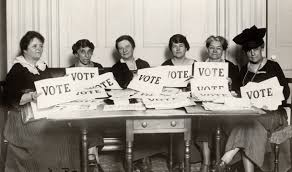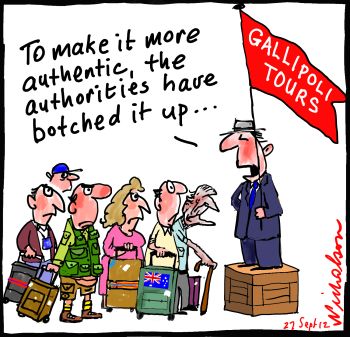
Examining the demographics of the turnout rate in 2014 gives us an opportunity to look closely at the general disenfranchisement rule. If it holds true, as we have suggested so far, that the turnout rate of any given demographic will be proportionate to the degree that this demographic can expect to have its wishes met by the political establishment, then this section ought to tell us a lot about the sort of person who runs New Zealand.
Commensurate with the fact that all Kiwi Prime Ministers up until now have been Pakeha, there is a very strong correlation of 0.71 with being of European descent and turnout rate in 2014. This was not only the strongest but the only correlation of its kind that was positive.
The correlation with turnout rate in 2014 was -0.10 for being Asian, -0.44 for being a Pacific Islander and -0.77 for being Maori. The correlation between turnout rate in 2014 and being Maori is so strongly negative that barely half of all eligible Maoris voted in 2014.
Pacific Islanders are disenfranchised by poverty and poor education to a similar degree to Maoris, but as a consequence of being relatively recent immigrants they do not have the intergenerational trauma that Maoris do.
Predictably, then, the correlations between turnout rate and religion reflects the religious proclivities of the various ethnicities.
The religious beliefs that had the strongest positive correlations with turnout rate in 2014 were Anglicanism (0.41), Presbytarianism (0.32), Brethren (0.32) and Judaism (0.30).
The religious beliefs that had the strongest negative correlations with turnout rate in 2014 were Mormonism (-0.68), Ratana (-0.68), Maori Christian (-0.64) and Jehovah’s Witness (-0.57).
Interestingly, there was a significant positive correlation of 0.24 between having no religion and turnout rate in 2014. This contradicts the glibly accepted wisdom that the religious like to vote and the irreligious do not – in reality there are more fundamental factors in play.
What supports the accepted wisdom is the very strong positive correlation of 0.77 between turnout rate in 2014 and median age. Old people love to vote: indeed, for many of them it is the very highlight of their year. It should, however, be noted that the strength of this correlation is mostly an artifact of needing to be eighteen years old in order to cast a vote.
In fact, for people in the 20 to 29 age bracket, the correlation with turnout rate in 2014 was -0.21, which was negative but not significant.
One trend is very clear: that the more educated a person is the more likely they are to be engaged with the political system. This directly follows the general enfranchisement rule, considering that a Kiwi with a degree is vastly more likely to work in the higher levels of government, and one with an advanced degree even more so.
The correlation between turnout rate in 2014 and having no qualifications was -0.46. This is not particularly strong, but if one considers that most people with no qualifications are old and that old people love to vote, one can guess that very few young people with no qualifications vote at all.
On the other hand, the correlations between turnout rate in 2014 and having a degree were significantly positive for all degrees. Between turnout rate in 2014 and having a doctorate the correlation was 0.45. As for no qualifications, this correlation is partially an artifact of the relatively recent expansion of the tertiary education system, one consequence of which is the relative youth of higher degree holders.
The correlation between turnout rate in 2014 and being on the pension ws 0.51, which, as mentioned above, reflects that many pensioners still command a considerable amount of wealth and are very engaged in the direction of the political system, despite no longer working.
One result that some might find surprising is that the correlation between turnout rate in 2014 and being on the invalid’s benefit (-0.53) is not as strong as the correlation between turnout rate in 2014 and being on the unemployment benefit (-0.76). This could be surprising because it could reasonably be expected that an invalid is more severely disenfranchised than someone who could conceivably have a full-time job next week.
The difference is that the class of unemployed in New Zealand are disproportionately drawn from the generally disenfranchised – the poor, the young, the Maori etc. The class of invalids, by contrast, are generally more average people who have fallen ill due to injury, an unfortunate genetic condition or mental illness. This means that they are drawn more evenly from all social classes and ethnic groups.
The correlation between being on the pension and turnout rate in 2014 is so strong, and these pensioners so numerous, that there are negative correlations between turnout rate in 2014 and working in most industries. The strongest were in transport, postal and warehousing (-0.64), manufacturing (-0.51) and administrative and support services (-0.44).
The only significant positive correlation between turnout rate in 2014 and working in any industry was with the exceptionally not disenfranchised professional, scientific and technical services, which was 0.28.
Men vote significantly more than women, which follows the general disenfranchisement rule. The correlation between turnout rate in 2014 and being male was 0.29, which perhaps reflects a weakly-held folk belief that politics is a man’s business and a man’s world.
Curiously, being born in New Zealand had a significant negative correlation of -0.24 with turnout rate in 2014. That the foreign-born vote more than Kiwis might surprise many. However, if one considers that being born in Britain has a correlation of 0.81 with turnout rate in 2014, and that almost all Maoris in New Zealand are New Zealand-born, the reasons why become apparent.
Predictably, the poor do not vote as often as the wealthy. All of the income bands from $0-50K had significant negative correlations without turnout rate in 2014, except for the student bands of $15-25K. All of the income bands above $70K had significant positive correlations with turnout rate in 2014.
The above statistic might be the single most important correlation detailed in this study.
If the most basic division of New Zealand society is into haves and have-nots, the next most basic might be into the have-a-lots, the have-a-littles, and the have-bugger-alls. This neatly reflects the three basic kinds of land tenure: freehold, mortgage, and renting.
As a consequence, the correlations between turnout rate in 2014 and tenure of dwelling are 0.72 for freehold land, -0.66 for rented land and an even -0.00 for mortgaged land.
One final curiousity is the correlation of 0.21 between turnout rate in 2014 and living in the South Island. This is much stronger than most people might expect, and possibly reflects the degree to which old money from the early settlement of the South Island still enfranchises the inheritors of it.
*
This article is an excerpt from Understanding New Zealand, by Dan McGlashan, published by VJM Publishing in the winter of 2017.



